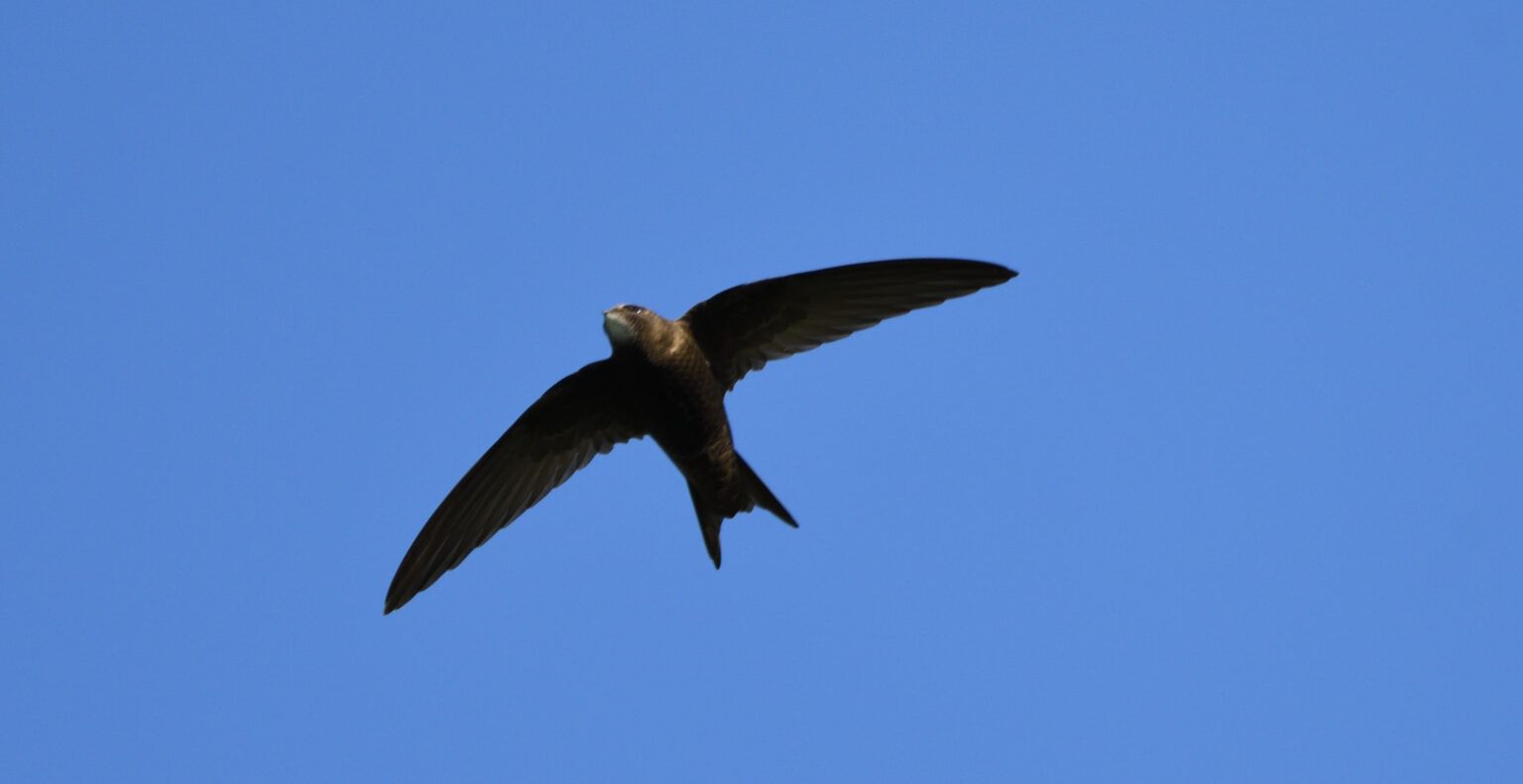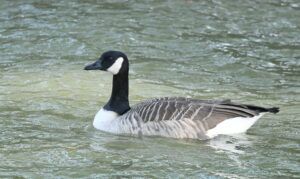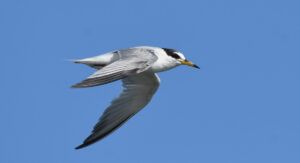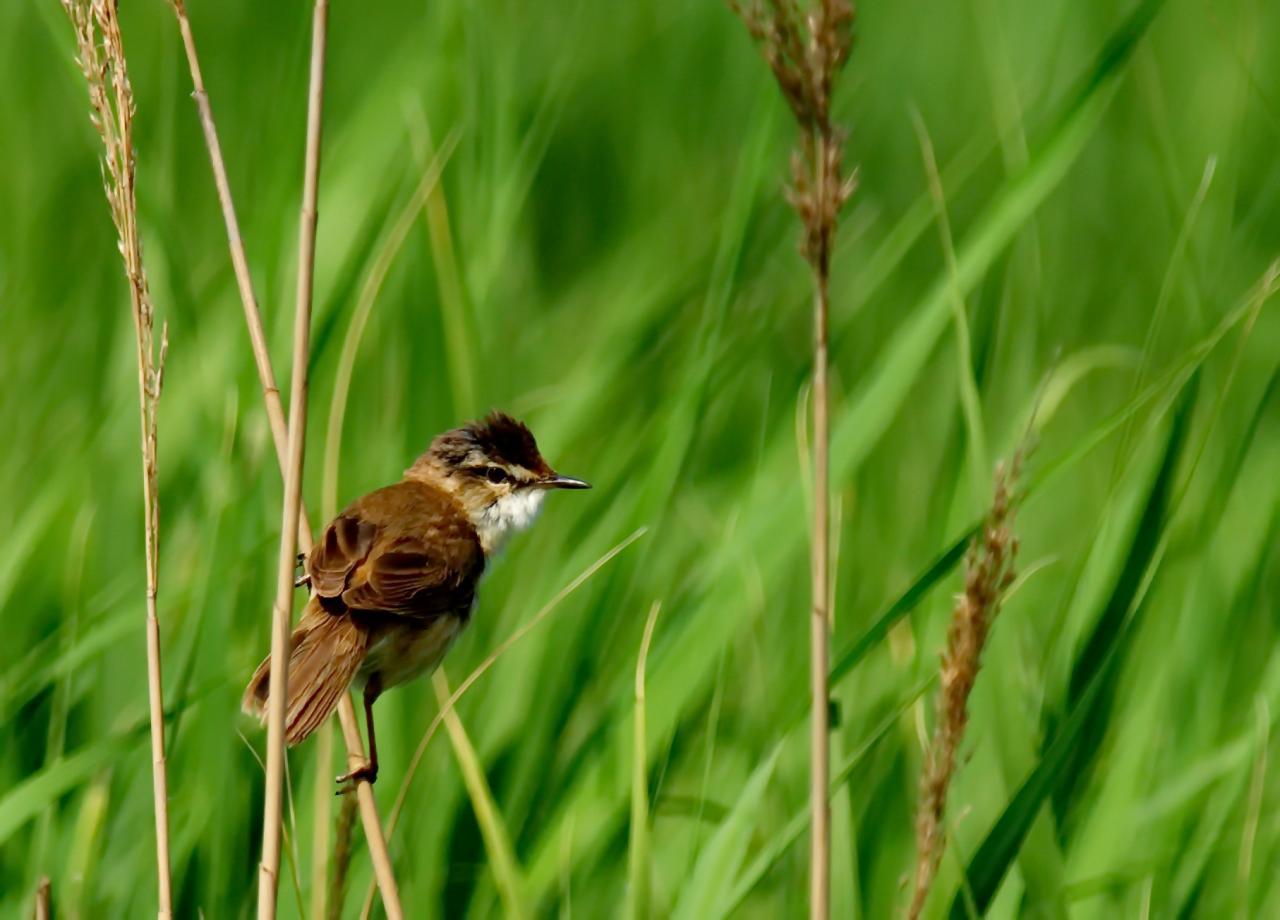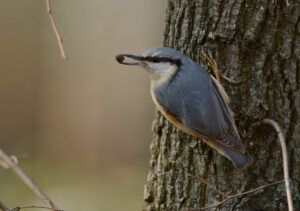The common swift (Apus apus) is a medium-sized bird, superficially similar to the barn swallow or house martin but somewhat larger. It is, however, completely unrelated to those passerine species, since swifts are in the separate order Apodiformes. The resemblances between the groups are due to convergent evolution reflecting similar life styles. Swifts’ nearest relatives are thought to be the New World hummingbirds and the Southeast Asian treeswifts.
Their scientific name comes from the Ancient Greek words α “without”, and πούς, “feet”. ἄπους, apous, meaning “without feet”. These birds have very short legs which they use only for clinging to vertical surfaces (hence the German name Mauersegler, literally meaning “wall-glider”). They never settle voluntarily on the ground, where they would be vulnerable to accidents and predation.
The common swift was one of the many species described by Linnaeus in his Systema naturae in 1758. The predecessor of the Central European subspecies which lived during the last ice age has been described as Apus apus palapus.
Common swifts are 16–17 cm long with a wingspan of 38–40 cmand entirely blackish-brown except for a small white or pale grey patch on their chins which is not visible from a distance. They have a short forked tail and very long swept-back wings that resemble a crescent or a boomerang.
Their call is a loud scream in two different tone pitches, the higher of which issues from the female. They often form ‘screaming parties’ during summer evenings, when 10-20 swifts will gather in flight around their nesting area, calling out and being answered by nesting swifts. Larger “screaming parties” are formed at higher altitudes, especially late in the breeding season. The purpose of these parties is uncertain, but may include ascending to sleep on the wing, while still breeding adults tend to spend the night in the nest.
Swifts may nest in former woodpecker tree burrows found in ancient forests, such as some 600 reported nesting in the Białowieża Forest of North Eastern Poland, or the small colony found in a combination of woodpecker holes and tree nestboxes on the RSPB’s reserve at the Caledonian Forest in Abernethy, Scotland. While tree holes together with cliffs may have comprised their historic nesting resource, the almost complete removal of ancient forest from their nesting range has resulted in adaption to man-made sites. Swifts build their nests of air-borne material caught in flight, bonded with their saliva, in suitable buildings hollows, such as under tiles, in gaps beneath window sills, and most typically under eaves and within gables.
Swifts form pairs that may couple for years, and often return to the same nesting site and partner year after year, repairing degradation suffered in their 40 week migratory absence. Insects such as clothes moths, carpet and larder beetles may consume all but the most indigestible nest elements, typically feather shafts.
Young nesting swifts are able to survive for a few days without food by dropping their body temperature and metabolic rate, entering a torpid state.
Except when nesting, swifts spend their lives in the air, living on the insects caught in flight; they drink, feed, and often mate and sleep on the wing. No other bird spends as much of its life in flight. Feeding parties can be very large in insect-rich areas, such as wetlands. Reports of as many as 2000 swifts feeding over flooded gravel pits, lakes and marshy river deltas are not uncommon, and may represent an ingress of swifts from within as much as a 100 kilometer radius; swifts nesting in Western Scotland are thought to venture to Lough Neagh in Northern Ireland to feed on the abundant and nutritious “Lough Neagh Fly”.
Common swifts are migratory. Their summer breeding range runs from Spain and Ireland in the West across to China and Siberia in the East. They breed as far South as Northern Africa (in Morocco and Algeria), with a presence in the Middle East in Israel, Lebanon and Syria, the Near East across Turkey, and the whole of Europe as far North as Norway, Finland, and most of sub-Arctic Russia. Swifts migrate to Africa by a variety of routes, ending up in Equatorial and Sub-Equatorial Africa, excluding the Cape. Common swifts do not breed on the Indian Subcontinent.
Subjects of a geolocator tracking study demonstrated that swifts breeding in Sweden winter in the Congo region of Africa.
Swift nests commonly support populations of the chewing louse, Dennyus hirundinis and the Lousefly, Crataerina pallida.
The heraldic bird known as the “martlet”, which is represented without feet, may have been based on the swift, but is generally assumed to refer to the house martin; it was used for the arms of younger sons, perhaps because it symbolized their landless wandering.
photo: Mihai BACIU

